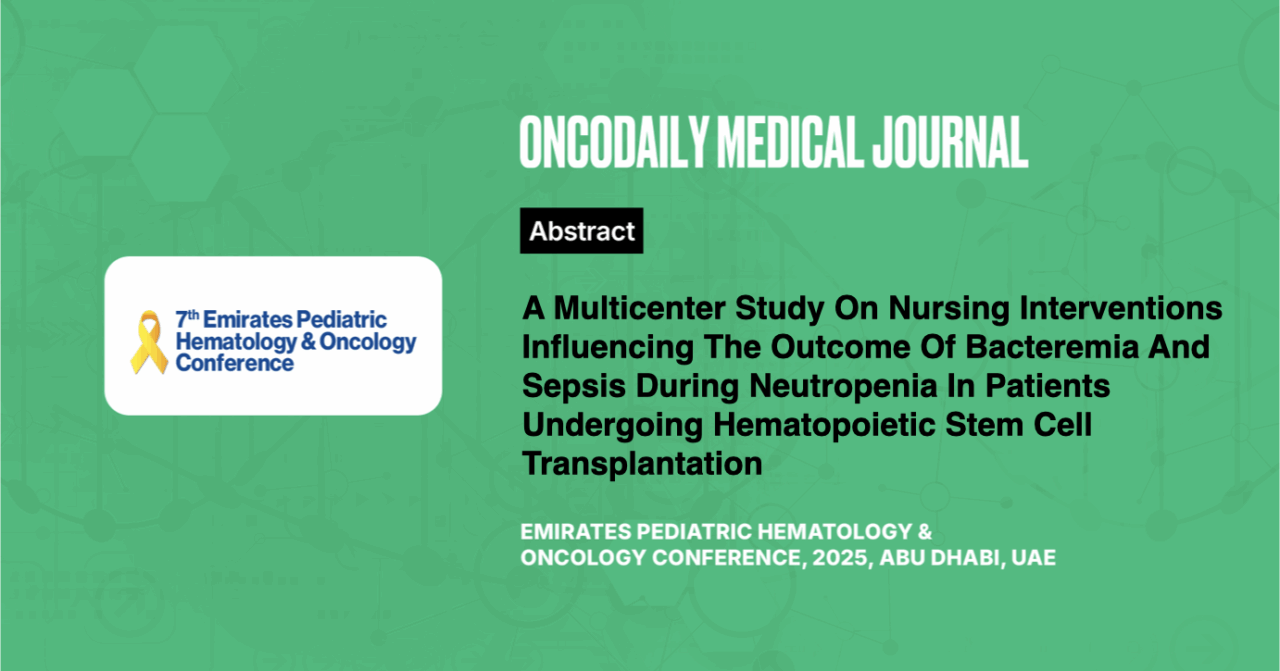A Multicenter Study On Nursing Interventions Influencing The Outcome Of Bacteremia And Sepsis During Neutropenia In Patients Undergoing Hematopoietic Stem Cell Transplantation
Abstract
Introduction: The neutropenic phase during hematopoietic stem cell transplantation (HSCT) poses a significant challenge with blood stream infections. Translocation of bacteria from the child’s own gastrointestinal tract is the leading cause of infection. Sepsis due to micro-organisms from the hospital environment including water supply can also result in infections. We present a multicenter study on the incidence of bacteremia and neutropenic sepsis in patients undergoing hematopoietic stem cell transplantation (HSCT) and study the factors associated with central line care by the nursing team which impacted the outcome.
Methodology: We collected retrospective data on culture positive sepsis from 3 centers across India from Mumbai, Chennai and Delhi on patients undergoing HSCT from January 2019 to December 2023 using a uniform Central Line Bundle care practice
Results: Of the 984 HSCT performed, the incidence of culture-positive bacteremia was 16% (159/984). The male: female was 1.5:1 and 137 (86%) were less than 18 years and 22 (13%) were over 18 years of age. HSCT for non-malignant disorder accounted for 102 (64%) and malignancies 57 (35%). The venous access was a central line in 112 (70.4%), PICC line in 41 (25.9%), and Hickmann line in 6 (3.7%). The most common organisms isolated were Klebsiella pneumoniae in 47 (30%), and E. Coli in 42 (26.4%) patients.
The overall mortality in the cohort was 43/159 (27%). Sepsis-related mortality was significantly higher in adults (age>18 years) 11/22 (50%), as compared to children (age<18 years) 32/137 (23.4%) (p value=0.013). Sepsis related mortality was 4/112 (3.5%) with a central line, 4/41 (9.7%) with PICC line, and 2/6 (33%) with Hickmann line (p value=<0.001). Mortality with higher with Klebsiella pneumoniae at 23/47 (48.9%) and E. Coli 10/42 (23%) as compared to other organisms isolated 10/70 (14%) (p value=<0.001).
This multicenter study across India helped identify the factors associated with higher sepsis related mortality that could be reduced with simple nursing intervention. The incidence of neutropenic sepsis in patients undergoing HSCT was 16% and the sepsis-related mortality of 27% can be reduced by early replacement of central lines during bacteremia.
Conclusion: Adoption of central line bundle, an in-house checklist for regular replacement of water in humidifiers, infusion sets, and ventilator tubing, during HSCT is required to prevent morbidity and mortality.





